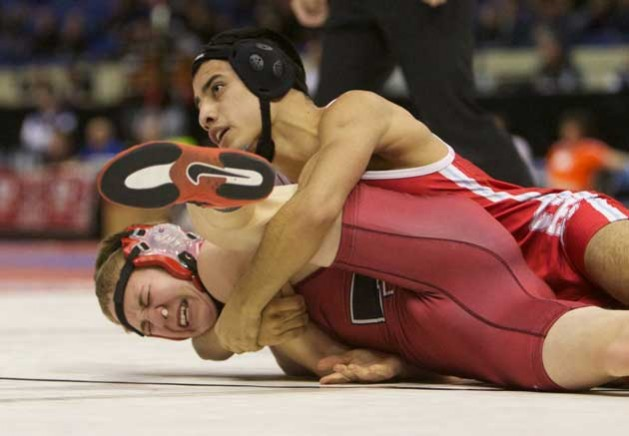|
The Missing Component of Your Wrestling Training
Provided By - Stack.com
 Going head-to-head against an opponent on the wrestling mat requires many attributes, including speed, strength, and endurance. All are important, but one attribute stands above the rest and can give one competitor a distinct advantage over another. Power—the combination of strength and speed—is the ability to produce force quickly and rapidly. Many wrestling training programs focus on other attributes, and few understand and correctly apply power training to produce an unstoppable force on the mat. For best results, both aspects of power, strength and speed, must be implemented in training. Many high school wrestlers have a training program in place whose main goal is to get stronger. Few focus on the rate of force development. When going up against an opponent, strength matters little if it can't be applied quickly and accurately. For maximum power development, wrestlers should incorporate both strength and speed training into their regimens. A sample hour-long program should be organized in this progression:
The length of each segment can vary depending on an athlete's unique needs, training history, and training age, but the order is crucial. For maximum benefit, power training should be done right after the warm-up, when you're still fresh. In the power stage, focus on exercises that involve moving fast for very short periods of time, such as jumping, bounding, sprinting, medicine ball drills, and Olympic lifting variations. Athletes should be introduced to power training gradually. Initial sessions should top out at 18 to 24 repetitions, which can be broken down in a variety of ways:
Each option consists of six or fewer repetitions. This ensures that you will be able to maintain the proper level of intensity throughout the set. Depending on the load, rest periods should last between 90 and 120 seconds, allowing you time to recover before attempting the next set. Dedicated strength training follows the power phase of the workout. Strength training should include total-body exercises like Squats, Deadlifts, Military Press, Bench Press, Chin-Ups and Push-Ups, as well as accessory movements. Accessory movements can include Bicep Curls, Tricep Extensions and grip work, depending your individual needs. Following strength training, energy system training can be used to appropriately develop your cardiovascular system to meet the demands of your sport. For wrestling, this may involve minute-long intervals of high intensity followed by short recovery intervals. In this way, you will increase your work capacity and be able to maintain a higher intensity for longer periods on the mat. A complete sample routine would look like this:
(Note: Exercises labeled C1 & C2 and D1 & D2 should be alternated in superset fashion.) With a renewed focus on power development and a well-rounded program incorporating speed, strength, and cardiovascular development, wrestlers will be more prepared to step onto the mat with their opponent. The increased focus on producing force quickly will give them a leg up on their competition and lead to more success. |
|
|






